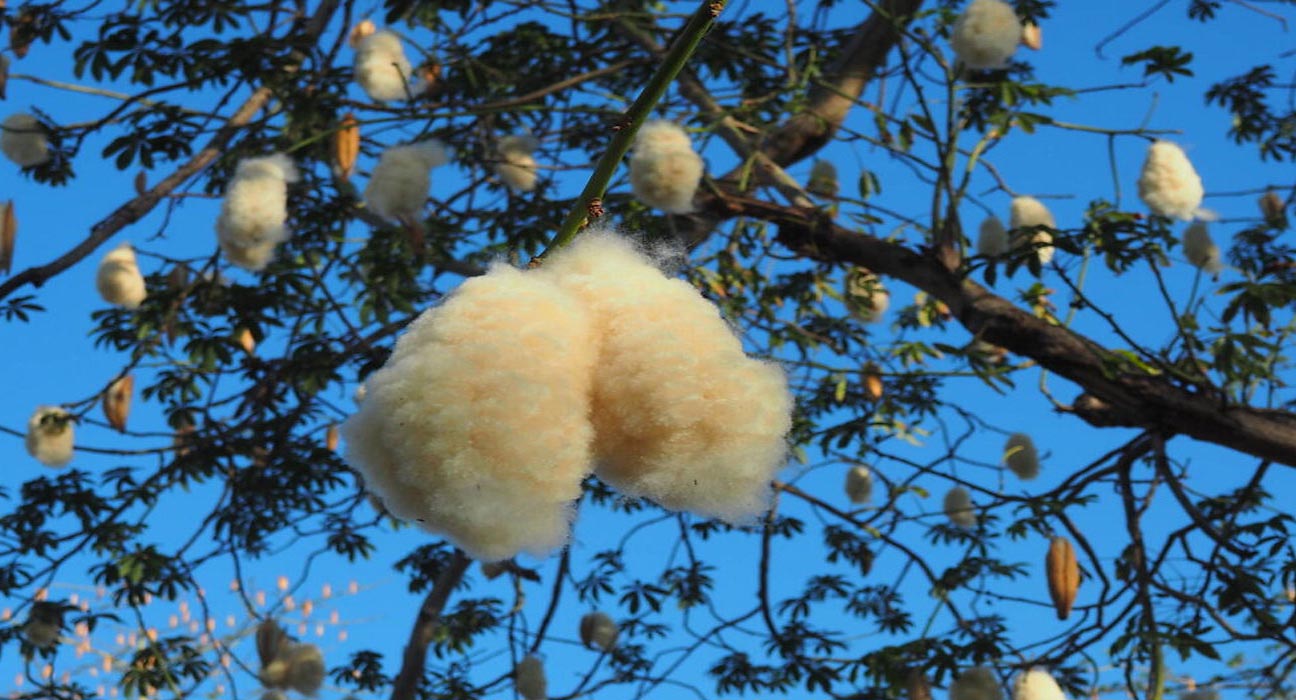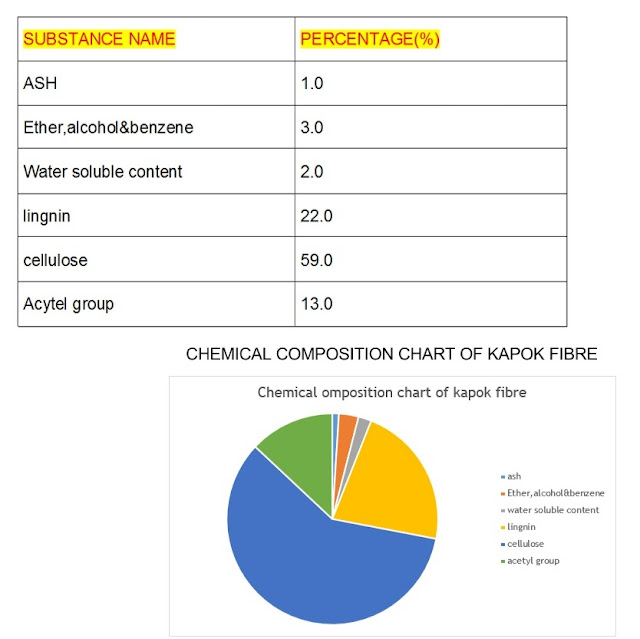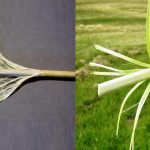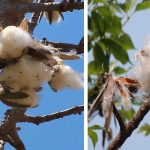Kapok Fiber / Capok fiber is one of the natural cellulosic fibers that grow on the kapok plant. This fiber is also known as silk cotton because its natural luster is similar to that of pure silk. It is a seed Fiber. We will discuss the properties and uses of Kapok Fiber with the harvesting process in this article.
Physical Properties of kapok fiber:
- Average linear density – 0.064 tex
- Average diameter – 2.5 micrometer
- Average length – 20 mm
- Fineness – 0.4 – 0.6 denier
- Tenacity – 1.4 to 1.74 gm/den.
- Elongation at break -1.8 to 4.23
- Absorbency – kapok fiber has a high lumen percentage, because of this it has excellent oil absorbency and retention capacity.
- Lightweight – Capok fiber is 8 times lighter than cotton by volume
- Effect of acid – Capok fiber shows good resistance to acid and is not affected by acid.
- Effect of alkali – Capok fiber is not affected by alkali, which shows good resistance to alkali.
CHEMICAL COMPOSITION OF KAPOK FIBER:
The chemical composition is given below table:
Harvesting of Kapok Fiber
To obtain this fiber, the fruits are harvested when fully ripe and mature. Ripeness is decided by the fruit color changing from green to brown and the surface possibly becoming wrinkled. The fruits are normally harvested by knocking them off the tree before. Trees normally start to bear fruit when they are 3–8 years old.
• Yield:
“A fully developed tree may yield 330–400 fruits per year under optimum conditions”. Almost 15–18 kgs of fibers and 30 kgs of seed get obtained. A satisfactory average annual fiber yield is about 450 kg/hectare, whereas about 700 kg/hectare is considered very good.
• Handling after harvest:
The fruits are hulled as soon as possible to obtain Capok fiber after harvesting. The drying is carried out in dry air or with fans in cage-like structures. The seeds lie loose in the floss, and therefore de-seeding is easy. They are usually separated from the floss by beating. The quality of kapok fiber is judged by fiber length, freedom from seeds and foreign matter, moisture content, color, smell, and luster. Excessive pressure should not be used when kapok is baled. Excessive baling pressure can destroy the elasticity and diminish the quality of the fiber.
Uses of Kapok Fiber
• Kapok fiber is used for stuffing cushions, pillows, and mattresses, and for insulation, absorbent material, and tinder.
• The fiber may also have potential as a biodegradable alternative to synthetic oil-sorbent materials, due to its hydrophobic-oleophilic properties.
• The flowers are an important source of nectar and pollen for honeybees.
• Eco Filling and fiber are used as stuffing in toys, dolls, cushions, pillows, pet bedding, doonas, teddy bears, upholstery, and homewares.
• Eco-friendly fibers replace the need for traditional polyester stuffing derived from 100% chemicals. Eco-friendly literally means earth-friendly or not harmful to the environment.
Information About Kpok Tree
• This tree can grow up to 100 meters high.
• This tree can be alive for 300 years.
• The trunks of kapok can be reached to 3 meters of diameter.
• Kapok tree doesn’t get damaged during kapok fiber harvesting.
• The kapok tree doesn’t require insecticides and artificial irrigation.
• This tree can be alive for 300 years.
• The trunks of kapok can be reached to 3 meters of diameter.
• Kapok tree doesn’t get damaged during kapok fiber harvesting.
• The kapok tree doesn’t require insecticides and artificial irrigation.
• It has the lowest specific gravity among all-natural fiber existing in the world.
• Since kapok fibers are covered with a thin film of wax that prevents insects and tiny organisms.
• Kapok is a fully ecological fiber.
• It has good insulating properties. In winter it keeps the warmth in, while in summer it prevents the heat.
• It is used for acoustic and thermal insulation.
• Kapok’s flotation ability is 14 times better than that of cork.
• Kapok is recommended for people who are allergic to dust mites since kapok fiber contains a substance that dust mites dislike and therefore they do not breed in it.
Reference:
- https://www.textileadvisor.com/2020/03/kapok-fibre-chemical-compositionand.html






